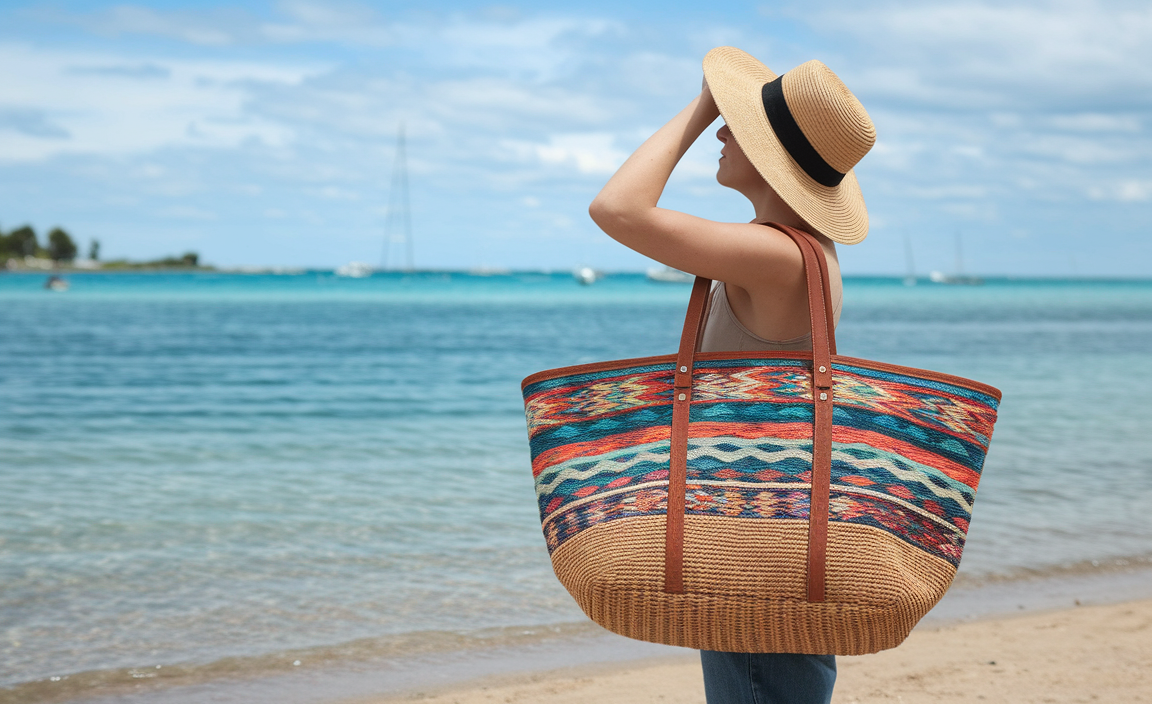When exploring the majestic Appalachian Mountains, finding the right place to stay ensures a comfortable and memorable trip. This guide covers essential lodging options, from cozy cabins and rustic campsites to charming inns and mountain resorts, helping you choose based on your adventure style and needs, making your Appalachian journey truly stress-free.
The vast and beautiful Appalachian Mountains stretch across many states, offering incredible natural beauty and a wealth of outdoor adventures. But when it comes to visiting, a common question is: “Where should I stay?” It can feel a little overwhelming to pick the perfect spot that fits your idea of comfort, budget, and the kind of experience you’re looking for.
Whether you dream of waking up to mountain views from a private porch, sleeping under the stars, or enjoying resort amenities, there’s a perfect Appalachian stay waiting for you. This guide is here to help take the guesswork out of it. We’ll explore the most popular and essential lodging options so you can plan your trip with confidence. Get ready to discover your ideal mountain home away from home!
Planning Your Appalachian Stay: Key Considerations
Before diving into specific accommodation types, let’s touch on a few key things to think about. These will help narrow down your choices and ensure your stay aligns with your travel dreams.
Location, Location, Location
The Appalachians are huge! Are you looking to be close to a specific National Park like Shenandoah or the Great Smoky Mountains? Do you prefer charming small towns or a more remote, secluded feel? Knowing your desired region or proximity to attractions is the first step.
Your Travel Style
Are you an active hiker looking for a simple basecamp, a couple seeking a romantic getaway with amenities, or a family needing space and kid-friendly activities? Your travel style often dictates the type of accommodation that will best suit you.
Budget
Appalachian accommodations range from very affordable camping to luxurious resorts. Setting a budget beforehand will help you focus on options that are financially comfortable for your trip.
Amenities and Comfort Needs
Consider what’s important to you. Do you need a full kitchen, Wi-Fi, pet-friendly options, or perhaps specific accessibility features? For some travelers, having access to essentials like adult or child diapers for peace of mind during long travel days or activities is also a crucial consideration.
Essential Appalachian Stays: A Comprehensive Guide
Now, let’s explore the different types of places you can call home during your Appalachian adventure. Each offers a unique way to experience the mountains.
1. Cozy Cabins & Vacation Rentals
Cabins and vacation rentals are often the quintessential Appalachian experience. They offer a feeling of home while immersing you in nature.
Pros:
- Privacy: Enjoy your own space, away from the hustle and bustle of hotels.
- Amenities: Many come with full kitchens, living areas, and sometimes even hot tubs or fireplaces.
- Flexibility: Great for families, groups, or longer stays, offering more room and self-catering options.
- Immersive Experience: Often located in scenic, woodsy areas, providing a true mountain feel.
Cons:
- Cost: Can be more expensive, especially for smaller groups or shorter stays.
- Location Variability: Some rentals might be quite remote, requiring a car for all excursions.
- Self-Sufficiency: You’ll often need to bring your own groceries and handle cleaning upon departure.
When to Choose: Ideal for families, groups of friends, romantic getaways, or anyone seeking a home-like atmosphere with the option to cook their own meals and enjoy their own space.
2. Rustic Campsites & Glamping
For those who love to be close to nature’s embrace, camping and glamping offer fantastic options. From traditional tent camping to more luxurious ‘glamping’ setups, you can find a perfect fit.
Traditional Camping:
These are your classic campsites, often found within state and national parks. They typically offer a designated tent or RV spot, fire pit, and access to shared restrooms and water facilities. Many parks adhere to the National Park Service’s camping guidelines, ensuring a safe and enjoyable experience.
Glamping:
Glamping, or glamorous camping, elevates the outdoor experience. Think sturdy tents, yurts, or even small cabins equipped with comfortable beds, electricity, and sometimes private bathrooms. It’s the perfect blend of nature and comfort.
Pros:
- Affordability: Traditional camping is usually the most budget-friendly option.
- Nature Immersion: Unparalleled access to the sights, sounds, and smells of the natural environment.
- Simplicity: A great way to disconnect and enjoy basic living.
- Glamping Comfort: Offers outdoor adventure without sacrificing essential comforts.
Cons:
- Weather Dependent: Comfort can be significantly impacted by rain, cold, or heat.
- Limited Facilities: Shared bathrooms and lack of private amenities can be a challenge for some.
- Preparation: Requires packing specific gear and being prepared for outdoor living.
- Wildlife Encounters: You’ll be sharing your space with local fauna.
When to Choose: Best for adventurers, budget travelers, nature lovers, and those who enjoy the simplicity and thrill of outdoor living. Glamping is great for those who want the outdoor experience with added comfort.
3. Charming Inns & Bed & Breakfasts (B&Bs)
These smaller, often independently owned establishments offer a more personal touch and a glimpse into local hospitality.
Pros:
- Personalized Service: Innkeepers often provide local tips and a warm welcome.
- Unique Atmosphere: Many B&Bs are historic buildings with character and charm.
- Included Breakfast: A delicious, often home-cooked breakfast is typically part of the deal, saving you time and money.
- Intimate Setting: Perfect for couples or solo travelers looking for a quiet, friendly atmosphere.
Cons:
- Limited Amenities: May not have extensive facilities like pools or gyms.
- Less Privacy: You’ll be sharing common areas with other guests.
- Fewer Rooms: Can book up quickly, especially during peak seasons.
- Variable Check-in Times: Often have stricter arrival and departure windows.
When to Choose: Great for couples, solo travelers, history buffs, and anyone who appreciates a cozy atmosphere and personalized service with a great breakfast.
4. Mountain Hotels & Resorts
These offer a more traditional lodging experience with a range of amenities, often catering to tourists and families.
Pros:
- Abundant Amenities: Often include restaurants, pools, fitness centers, spas, and sometimes even guided activities.
- Convenience: Usually located near popular attractions and offer on-site dining.
- Reliability: Consistent service and predictable room standards.
- Accessibility: Generally easier to book and often have 24-hour reception.
Cons:
- Less Character: Can feel less unique compared to B&Bs or cabins.
- Higher Cost: Typically more expensive than other options.
- Crowded: Can be busy, especially during peak vacation times.
- Less Immersive: May feel less connected to the natural surroundings than other options.
When to Choose: Suitable for families needing amenities, travelers who prefer the convenience of on-site services, business travelers, or those seeking a comfortable, predictable stay with easy access to attractions.
5. Historic Lodges
Many national parks and scenic areas within the Appalachians boast historic lodges. These offer a unique blend of history, architecture, and unparalleled access to natural wonders.
Pros:
- Unique Atmosphere: Steeped in history and often feature distinctive architecture.
- Prime Locations: Frequently situated in breathtaking, prime locations within parks.
- Sense of Place: Offers a deeply authentic connection to the region’s heritage.
- Convenient Access: Ideal for exploring nearby trails and natural sights.
Cons:
- Limited Availability: Popular lodges book up months, sometimes a year, in advance.
- Older Facilities: Rooms may be smaller and amenities more basic than modern hotels.
- Can be Expensive: Their unique status and prime location can drive up prices.
To find out more about lodging within National Parks, the National Park Service website is an excellent resource for discovering these historic gems and understanding booking procedures.
When to Choose: Perfect for history enthusiasts, nature lovers who prioritize location, and those seeking a truly iconic Appalachian experience.
Choosing Your Appalachian Basecamp: A Comparison
To help you visualize your options, here’s a quick comparison of the most popular stay types:
| Accommodation Type | Best For | Typical Cost | Privacy Level | Amenities | Nature Immersion |
|---|---|---|---|---|---|
| Cabins/Vacation Rentals | Families, Groups, Longer Stays | $$ – $$$$ | High | Full Kitchens, Living Areas | High |
| Campsites | Budget Travelers, Adventurers | $ | Medium (at designated sites) | Basic (Shared facilities) | Very High |
| Glamping | Comfort Seekers Outdoors | $$ – $$$ | Medium – High | Comfortable Beds, Often Ensuite | High |
| Inns/B&Bs | Couples, Solo Travelers, Romance | $$ – $$$ | Medium | Breakfast Included, Cozy Common Areas | Medium |
| Hotels/Resorts | Families, Convenience Seekers | $$ – $$$$ | High | Full Range (Pools, Restaurants, etc.) | Low – Medium |
| Historic Lodges | History Buffs, Nature Lovers | $$$ – $$$$ | Medium – High | Varies, often classic comforts | Very High |
Packing Essentials for Your Appalachian Stay
No matter where you choose to stay, being prepared is key to a stress-free trip. Here are a few things to consider packing:
- Comfortable Footwear: Essential for hiking and exploring.
- Layered Clothing: Mountain weather can change rapidly.
- Rain Gear: A waterproof jacket and pants are a must.
- Navigation Tools: Maps, compass, or a reliable GPS device (and know how to use them!).
- First-Aid Kit: For minor scrapes and injuries.
- Snacks and Water: Especially important if you’re staying in remote areas or planning day trips.
- Reusable Water Bottle: To stay hydrated and reduce waste.
- Camera: To capture the stunning scenery!
- For Families: Don’t forget essentials like child diapers, wipes, and any specific comfort items your little ones need to ensure their journey is as smooth as yours.
- For Adults: If you require them, having discreet and comfortable adult diapers readily available can significantly reduce travel anxiety, allowing you to focus on the experience rather than worry about potential discomfort or inconvenience.
Remember, thorough packing is part of the Journey Essentials we champion at Journey Essentials.
Making the Most of Your Appalachian Experience
Once you’ve chosen your perfect stay, the fun truly begins! Here are some tips to enhance your trip:
- Book in Advance: Especially during peak seasons (spring, summer, and fall foliage), popular accommodations and locations fill up fast.
- Check Local Events: See if there are any festivals, farmers’ markets, or special events happening during your visit.
- Embrace the Local Cuisine: Sampling regional dishes is a highlight of any trip.
- Respect Nature: Follow Leave No Trace principles to preserve the beauty of the Appalachians for future visitors. For instance, properly disposing of waste, including items like adult or child diapers if used and needing disposal, is crucial. Many areas have specific guidelines for waste management.
The Appalachian region offers incredible diversity, and your accommodation choice is the first step in tailoring your adventure. Whether you dream of a treetop view from a cabin, the crisp air of a campsite, the warm welcome of a B&B, or the convenience of a resort, the mountains await!
Conclusion
The Appalachian Mountains are a treasure trove of natural beauty and adventure, and finding the right place to stay is fundamental to enjoying every moment. From the rustic charm of a secluded cabin and the immersive experience of a campsite to the personalized touch of a B&B, the predictable comfort of a hotel, or the historic allure of a mountain lodge, there’s an essential stay perfectly suited for every traveler.
By considering your priorities—location, style, budget, and comfort—you can confidently select an accommodation that enhances your journey. Remember, a well-planned stay sets the stage for unforgettable memories. So, pack your bags, embrace the spirit of the mountains, and get ready for an incredible Appalachian adventure!
Frequently Asked Questions
Q1: What is the best time of year to visit the Appalachians?
The Appalachians are beautiful year-round. Spring (April-May) offers blooming wildflowers and mild weather. Summer (June-August) is ideal for warm-weather activities. Fall (September-October) is famous for stunning foliage but is also the busiest and most expensive. Winter (November-March) offers fewer crowds and opportunities for experiencing snow-covered landscapes, though some activities may be limited.
Q2: Are there pet-friendly options in the Appalachians?
Yes, many cabins, vacation rentals, and some hotels/inns are pet-friendly. Campsites are also generally welcoming to pets. Always check the specific pet policy of your chosen accommodation before booking, as fees and restrictions often apply.
Q3: How far in advance should I book my stay?
For peak seasons (especially fall foliage in popular areas like the Great Smoky Mountains or Shenandoah National Park), it’s wise to book 6-12 months in advance. For off-seasons or less popular areas, 2-3 months might be sufficient, but booking early is always recommended for the best selection and prices.
Q4: What are the typical costs for different types of accommodations?
Costs vary greatly by location, season, and accommodation type. Camping is the most budget-friendly ($). Inns/B&Bs and traditional Hotels might range from $$ to $$$$. Cabins/Vacation Rentals and Glamping can be $$ to $$$$. Luxury Resorts and prime Historic Lodges can reach $$$$. Remember to factor in taxes and potential fees.
Q5: What should I do if I need accessible accommodation in the Appalachians?
When booking, specifically look for “accessible rooms” or inquire directly with the accommodation provider about their accessibility features. National and State Parks often have accessible campsites and facilities. Websites like the Access Paradise resource may offer some helpful information for planning accessible trips.
Q6: Are there places to stay that are good for travelers with specific health or comfort needs?
Yes, for travelers who may require discreet assistance like adult or child diapers, choosing private rentals (cabins, vacation homes) can offer the most comfort and normalcy. Many hotels offer private suites or rooms that provide more space. It’s always advisable to call ahead and explain your needs if you have concerns about privacy or specific amenities. Packing a sufficient supply, along with a small, portable disposal bag for discreet use, can ensure peace of mind on your journey.





